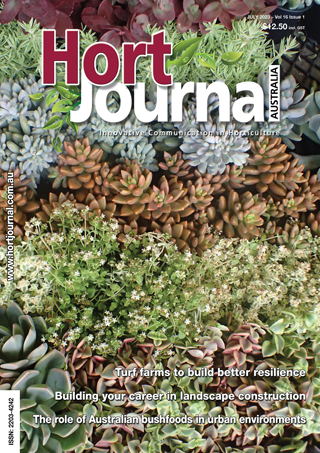A greener future
Battery powered tools have been used on building sites for a number of years and the range of options increases continually. Several manufacturers have embraced this market with a range that suits the home handyperson and professional alike. Increasingly, a range of maintenance tools for professional landscapers are finding their way to the market.
I recently attended a product launch for a range of battery powered tools and lawn mowers. A full range including blowers, chainsaws, trimmers and mowers, all powered by a common lithium-ion battery. I know this manufacturer is not unique in this market space and I could see the acceptance by the other attendees that they are ready to embrace this technology. Being cleaner, lighter, and quieter than petrol powered counterparts is a huge point of difference up front. Lower maintenance cost is another selling point. Fewer emissions, and lack of flammable fuel adds to the safety of an operator of these tools. Battery power also opens the door to a degree of automation, like the idea of a driverless car. Battery powered lawn mowers can be programmed to cut lawns, finding their way using satellite technology, without the constant supervision of an operator.
Historically, battery powered equipment suffered from poor battery life and long charge times. The modern lithium-Ion battery appears to have answered the critics. The battery life cited at the launch was around 3000 charge cycles, with a charge time of eight minutes. Hardly enough time to have a cup of tea.
Introducing battery technology into the environment is not without some disadvantages and consumer education is key to a functioning recycling system. Lithium-ion batteries present a serious fire risk if they are not kept out of the general waste streams. In Western Australia, the Department of Fire and Emergency Services posted on their website that in the past five years, the number of structure fires in WA believed to have been caused by battery fires has doubled, with 59 incidents in 2021/22, representing one in every 20 structure fires.
A CSIRO report by Sarah King et al, states that in 2018 Australian lithium-ion battery (LIB) waste was growing at a rate of over 20% per annum as a direct response to the increasing demand and uptake of portable and rechargeable electronic equipment and electric vehicles. In 2016, 3,300 tonnes of lithium-ion battery waste were generated but only 2% of this was collected and exported for offshore recycling.
Lithium-ion battery waste generation is forecasted to grow to between 100,000 to 188,000 tonnes by 2036. Unfortunately, most of the Australian lithium-ion battery waste is disposed of in landfill, which has undesirable environmental and human health implications.
A further CSIRO report by Zhao Y, Ruether T, Bhatt AI, and Staines J in 2021, underlines this exponential growth in battery production and opportunities for Australia. According to this report, the lithium salt used as an electrolyte had a value of US$35,000 per ton and hence worth recovering from used cells. Recycling processes research, and harmonising transport regulations governing waste between regions, is a priority for a profitable recycling system to work.
Legislation is needed to support a comprehensive recycling program.
Enjoy the read!
Karen Smith and your Hort Journal Team

